Russia: A guide for music fans Visit destinations to classical music and opera art with a historical reference. Learn exciting ideas and background information.
1
GOOGLE MAPS - OVERVIEW OF DESTINATIONS
Here you can find the locations of all described destinations on Google Maps.
1
2
LIFE AND WORK OF ARTISTS IN RUSSIA
Russia has a long tradition of famous composers as Tchaikovsky, the mighty five or the important composers of the 20th century
2
3
CONCERT HALLS AND OPERA HOUSES
St. Petersburg and Moscow are home to magnificent and historic opera houses and concert halls. One even played an important role in the Second World War.
3
4
MUSEUMS
Russia cherishes the heritage of its composers and you will find tips for seven museums in the guide.
4
5
HOUSES AND APARTMENTS OF ARTISTS
Where Tchaikovsky met his mysterious death.
5
6
MONUMENTS
Three Statues in St. Petersburg and Moscow
6
7
RESTAURANTS
Where Tchaikovsky may have contracted cholera
7
8
CEMETERIES AND TOMBS OF FAMOUS MUSICIANS
Visit the graves of famous artists in the two monumental cemeteries in Moscow and St. Petersburg.
8
GOOGLE MAPS – OVERVIEW OF DESTINATIONS
Zoom in for destinations in RUSSIA:
LIVE AND WORK OF ARTISTS IN RUSSIA
Mikhail Glinka
The overfather of Russian music
Mikhail Glinka can be considered the forefather of Russian classical music. He spent most of his active life in St. Petersburg. The opera “A Life for the Tsar” of 1834 is considered the first independent Russian classical music and, consequently, the first Russian opera and had a decisive influence on the next generations of Russian musicians. It was the first opera whose story played in Russian and in which a man from the people played the leading role and not a nobleman, which was unheard of for that time.
Model for the mighty five
Rimsky-Korsakoff and the “mighty five”, in particular, embraced his legacy and established national Russian music (as opposed to the more Western-oriented Tchaikovsky). The work, as well as Glinka’s second important opera “Ruslan and Ludmila,” premiered at St. Petersburg’s Bolshoi Theater (not to be confused with Moscow’s), which was demolished in 1888 to make way for the new Conservatory.
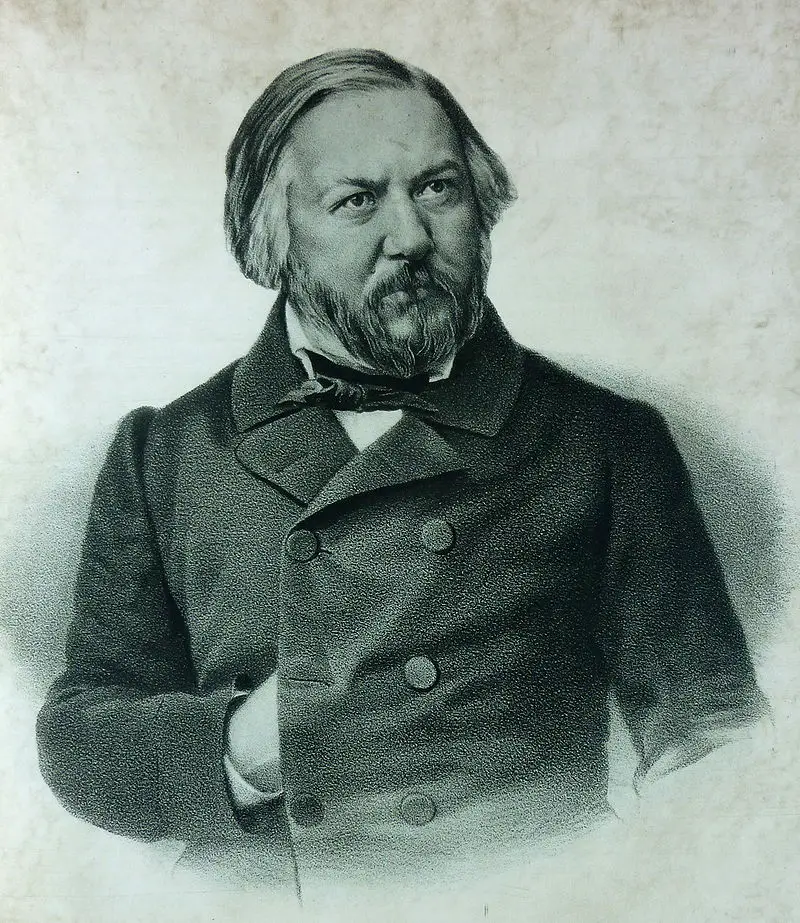
Nikolai Rimsky-Korsakoff.
Member of the mighty five
Rimsky-Korsakoff held an immensely important position in 19th-century Russian musical life. He absorbed the ideas of Glinka, the first Russian composer, drew inspiration from Balakirev, Berlioz, and Liszt, and was a member of he St. Petersburg powerful group that championed national Russian music.
He especially supported and encouraged fellow composer Mussorgsky, whose “Boris Godunov” he twice reworked, for example. Among his students were such resounding names as Stravinsky, Glasunov, and Prokovieff. His best-known works are probably “Scheherazade,” a program music influenced by Liszt, and “the Flight of the Bumblebee” from one of his operas.
Korsakoff came from a wealthy family with an army tradition; he himself went to sea for three years in his officer training until he decided to pursue music.
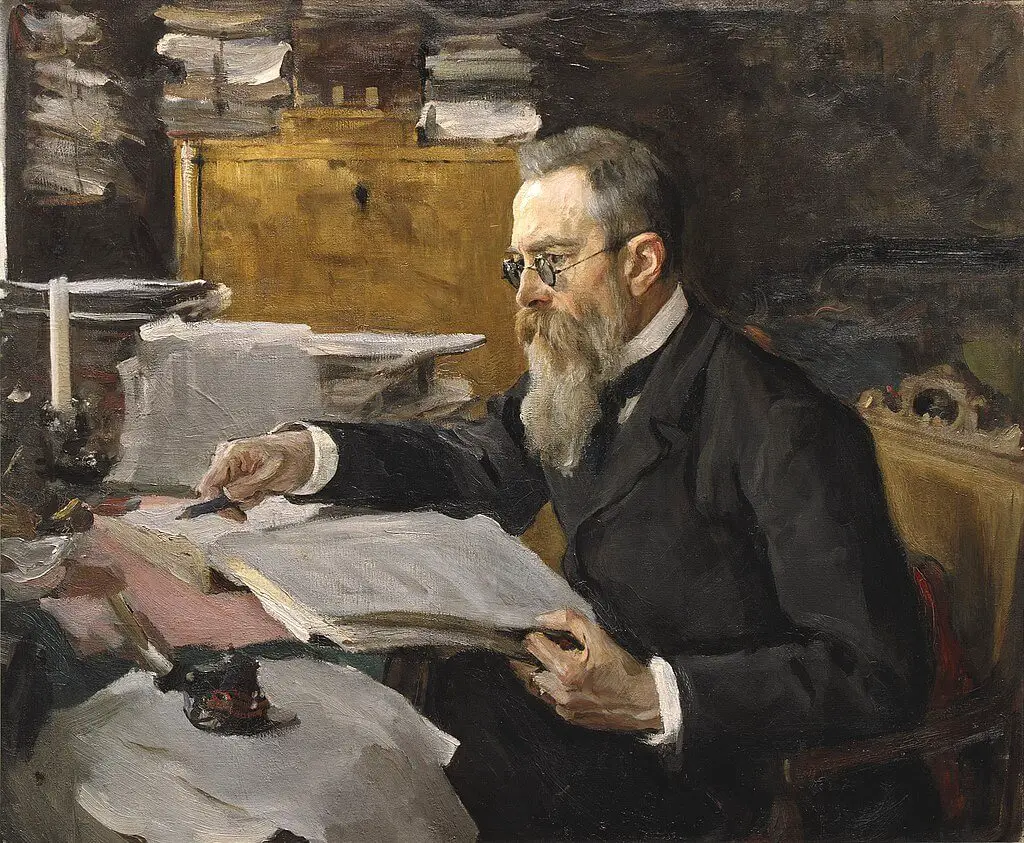
Modest Mussorgsky
Mussorgsky in St. Petersburg
Mussorgsky spent most of his artistically productive years in St. Petersburg. He was born in 1839 400 km south of St. Petersburg. He arrived there at the age of 13 to begin his education at a cadet school, according to family tradition, with a later career as a civil servant.
However, he left this path at the age of 19 to devote himself to music, but kept working in civil service positions to make a living. Mussorgsky lived on and off in residential cooperatives, at times in the commune of the “Mighty Handful” (with Balakirev, Borodin, Cui, Rimsky-Korsakov). His alcohol consumption and lack of formal musical training prevented a larger oeuvre, but his compositions of “Pictures at an Exhibition”, “Boris Godunov” and “Night on the Bald Mountain” achieved world renown (listen below to a excursus on his opera “Boris Godunov”).
Mussorgsky in Moscow
Mussorgsky’s artistic center throughout his life was in St. Petersburg, but it was his first visit to Moscow at the age of 20 that made a deep impression on him and triggered a “love for everything Russian.”
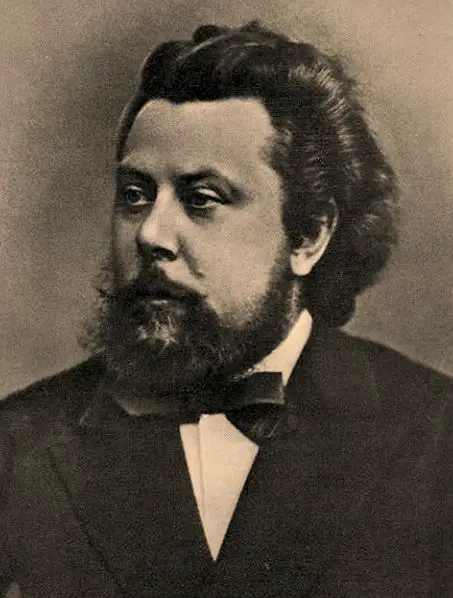
Sergey Prokoffiev
Return to Moscow
An exiled Russian, Prokofiev had emigrated in the wake of the October Revolution and returned to Moscow in 1936 to remain permanently in the Soviet Union. This move still amazes many today, as he voluntarily submitted to the artistic constraints of Stalin’s Bolshevik dictatorship. The period that followed was artistically very productive and the hoped-for surge in creativity that the composer wished for when he returned home became a reality.
The Ukrainian-born composer did not return to St. Petersburg, but to Moscow, where, due to the political situation, the center of the art scene was located.
Privately, the time was less happy. In the second half of the forties he married again. The marriage with his Spanish wife, who had come to Moscow with him, was dissolved and she was imprisoned in an internment camp for 8 years, allegedly because she had transferred money to Spain to her mother, which was then forbidden.
After a fall down the stairs, Prokofiev’s health did not recover properly at the end of the forties, and a show trial, which he, Shoshakovich and Katchaturian were subjected to, was very hard on him. He finally died on the same day as Stalin, which is why no one took notice of his death and he was buried without festivity.
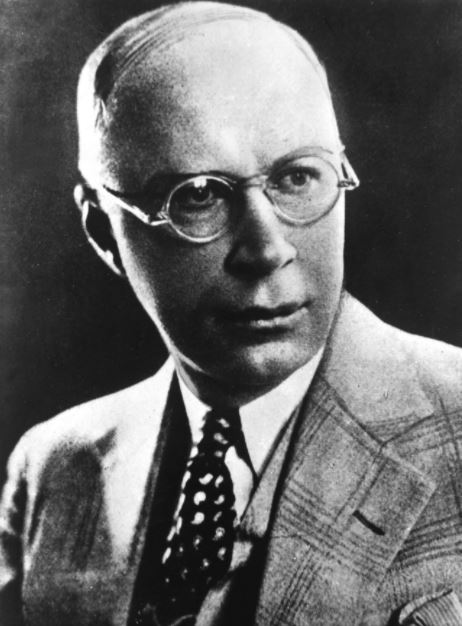
Dmitri Shoshakovich
He became a myth with the Siege of St. Petersburg
Shostakovich’s name will be forever associated with the city of Leningrad (St. Petersburg’s name during the Soviet Union period). In 1942, when the city was suffering in the stranglehold of the German siege, the Leningrad composer was working on his 7th Symphony, which he wanted to give to his beleaguered countrymen. Against his will, on Stalin’s orders, he was taken out of the city through a final loophole, where he finished writing the symphony.
The work quickly became known abroad, and Stalin, recognizing its symbolic significance, had the score airlifted over the German positions into the city center, where the conductor Eliasberg was to perform the symphony during the siege. The symphony was set for a large orchestra, but at the first rehearsal only 15 exhausted and emaciated musicians appeared, surviving on sawdust, horse and rat meat. Eliasberg tried to rehearse the work, but the trumpeter could not elicit a sound from his instrument due to weakness, and some musicians could barely hold their instruments. After 15 minutes, Eliasberg had to end the rehearsal.
The performance day during the siege
Now an appeal was made to the front-line soldiers. So the orchestra could be filled up and Eliasberg had to rehearse the highly complex work ready for performance with the assembled orchestra in 6 days. Before the performance began, a Soviet general was said to have bombed the German troops to ensure a trouble-free performance. Loudspeakers had been set up throughout the city so that residents and enemies could sense the population’s will to resist.
Listeners and musicians risked their lives with the performance, fortunately it could be performed without any disturbances and the final applause knew no end.
The first movement of the symphony is the most programmatic: after a carefree introduction (the pre-war idyll), an invasion motif, growing over 15 minutes, breaks in accompanied by drums (as in Ravel’s Bolero), symbolizing the enemy and oppression. Shostakovich used parts of the melody “Da geh ich zu Maxim” from Franz Lehár’s operetta The Merry Widow, which was one of Hitler’s favorite works, for the invasion motif.
In fact, Shostakovich had written this movement in peacetime, so the always ambiguous composer was also communicating a hidden message here. He remains ambiguous even when the rescuer enters, for the musical theme of the rescuer is hardly different from the aggressor.
Stalin thanked Shostakovich badly for this act, because only 4 years after the war Shostakovich (with Prokofiev and Khatchaturian) had to endure a show trial.
Dmitri Shostakovich as an air-raid soldier at the Leningrad Conservatory in World War 2:
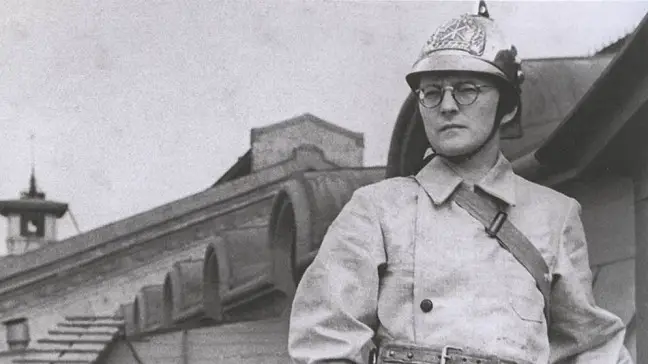
Concert of August 9, 1942:
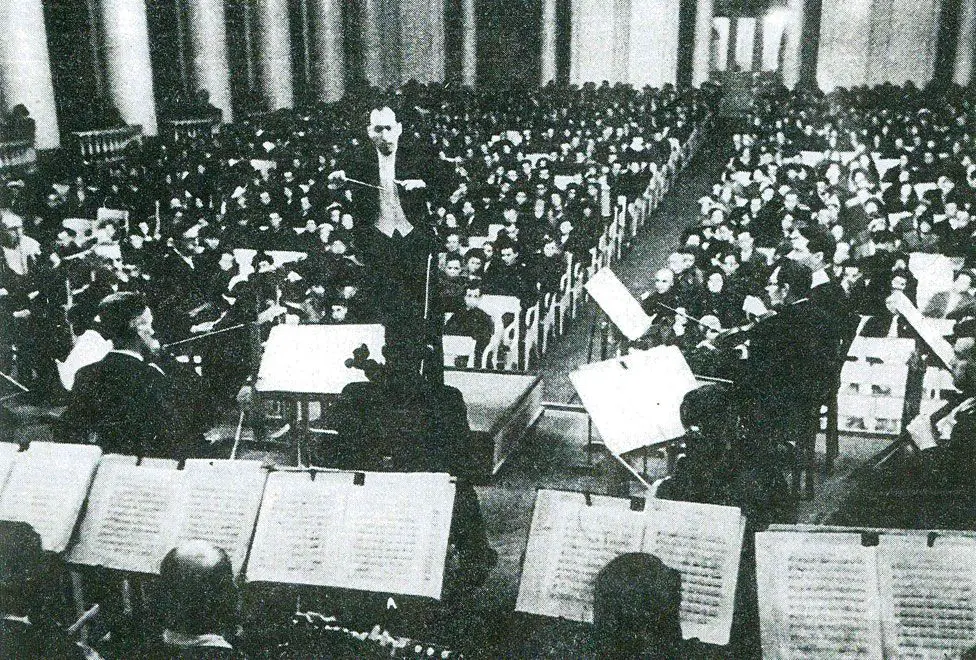
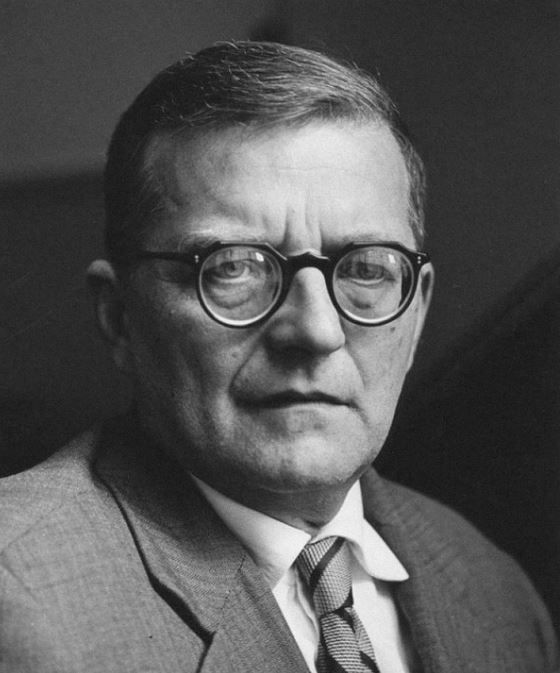
Johann Strauss
Johann Strauss visited Russia several times as a musician. His destination was Pavlovsk, where during the summer months he played music in a concert hall for the emperor, among others, and performed for balls.
Engaged by the Russian railroad company
The first Russian railroad line ran from St. Petersburg to the aristocratic palaces of Tsarskoye-Selo and Pavlovsk, 30 km to the south. The railroad line was put into operation in 1836, and in 1856 it engaged for the first time Johann Strauss and his orchestra to attract a wealthy class to Pavlov in the summer with their music and balls to promote the railroad line. To this end, the station building was turned into an entertainment palace, modeled on London’s Vauxhall, where restaurants and ballrooms invited visitors. The Strauss brothers subsequently played with a band in Pavlovsk almost daily from 1856 to 1865 and in 1869 from May to October. Strauss composed some pieces like the Pizzicato Waltz especially for this place.
The historical station building and pavilion, which were next to the palace, no longer exist, they were destroyed during the German occupation in World War II. Today, Pavlov Palace with its wonderful gardens still reminds us of this Belle Époque period.
The historic pavilion:

Pavlovsk Castle:
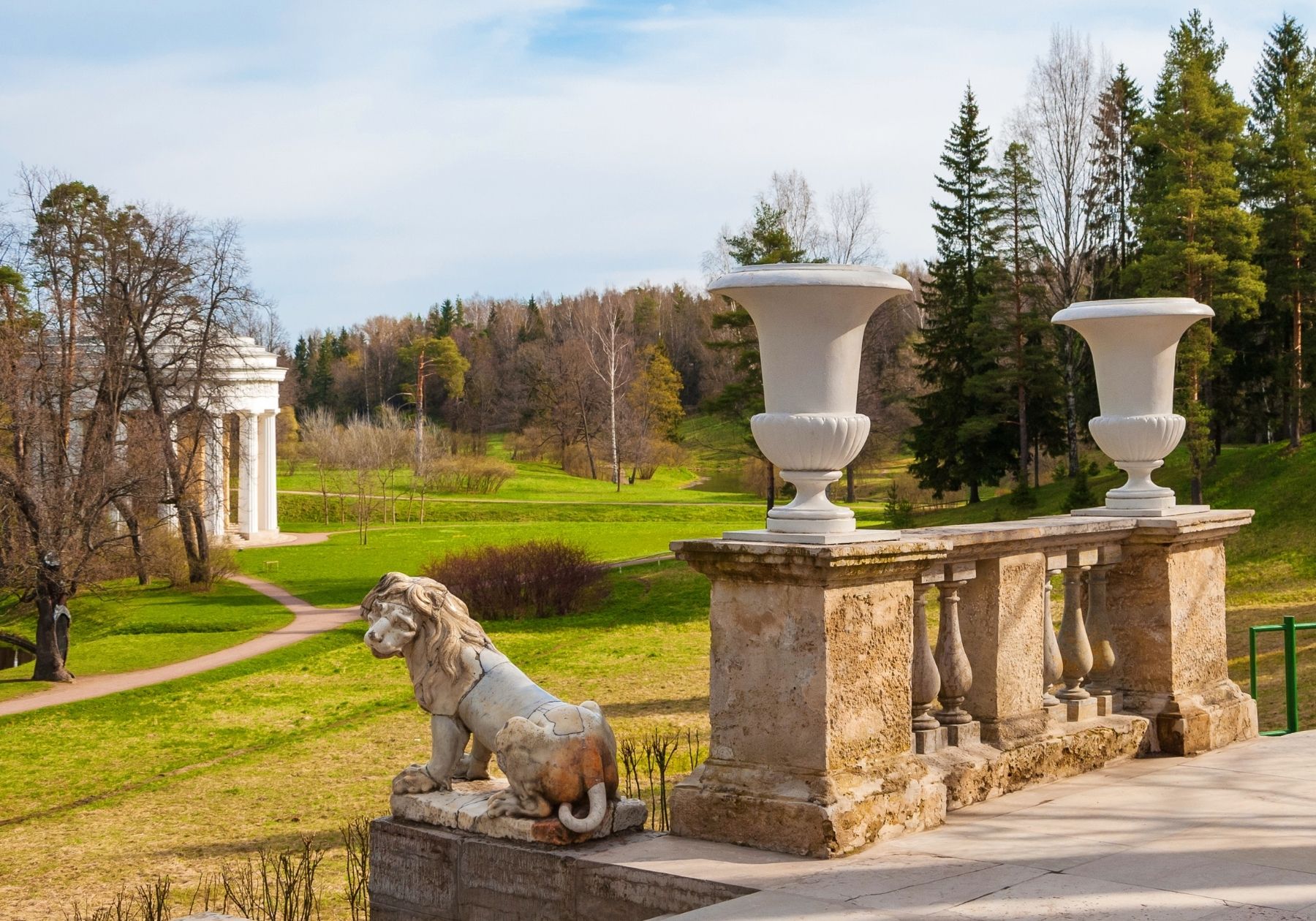
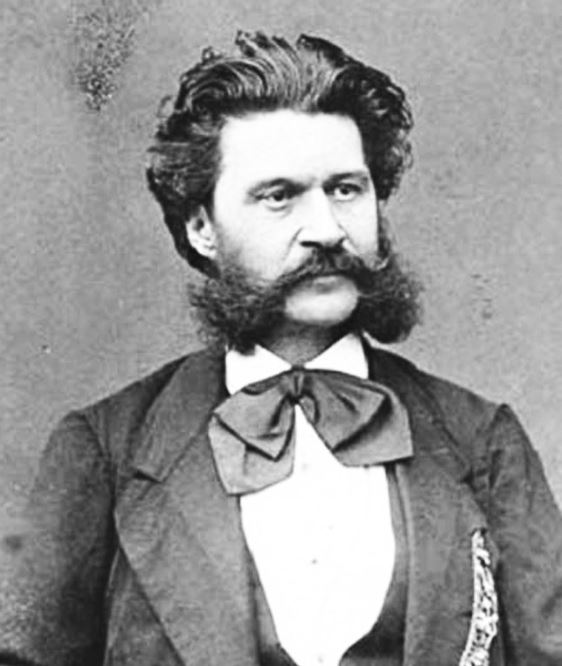
Sergei Rachmaninov
Lost the estates twice
Sergey grew up in the countryside in his early years as the scion of a wealthy family. But as the years went by, his parents lost their land holdings through incapacity, and while still a boy, Rachmaninov moved to Moscow with his mother, impoverished. There the pedagogue and conservatory teacher Sverev recognized his talent and let him live at his home, with free lodging and lessons. After his studies, Rachmaninov quickly established himself as a piano player and conductor, while his achievements as a composer, to his great regret, did not receive the recognition he had hoped for.
After several long visits to Germany, Rachmaninov returned to Russia as a conductor and lived in the country estate of Ivanova, which belonged to the parents of Rachmaninov’s wife, from 1910. Here, in addition to his posts, he found the peace he longed for and he composed, among other things, his 3rd Piano Concerto. The Rachmaninovs left Russia for the USA in the wake of the October Revolution and never returned to the beloved estate, which was looted in the revolution.
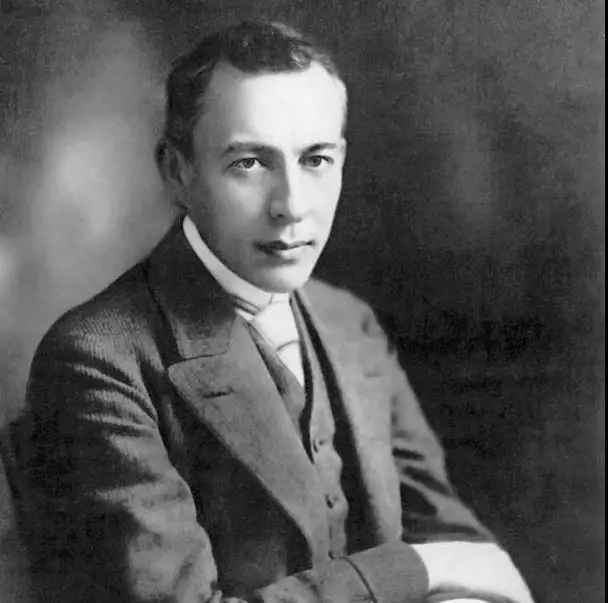
Peter Tchaikovsky
First years on a country estate
Tchaikovsky spent his earliest years on an estate in Votkinsk, where his father as the factory manager was granted a stately home. We know much about this period because Peter’s nanny Fanny Dürbach reported from this time in her memoirs. Tchaikowsky kept in touch with her and visited her in Montbéliard in 1892.
Traumatic move to St. Petersburg.
At the age of ten, Tchaikovsky experienced a traumatic event; to his horror, he was sent to a boarding school in St. Petersburg. With this event his childhood ends abruptly and he was prepared for a career as a civil servant.
At the age of 21, he leaft the civil service and began a career as a musician, penniless. He stayed in St. Petersburg for another 5 years and then went to Moscow, where he had his center of life as a teacher in the Conservatory. He returned to Leningrad countless times and finally died there only 53 years old.
The young Tchaikovsky:
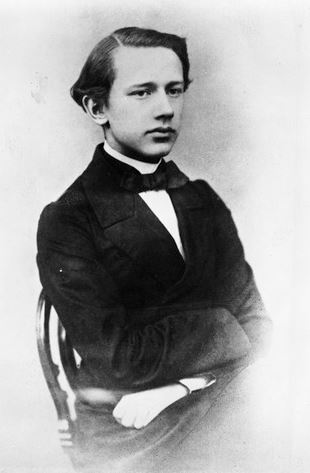
CONCERT HALLS AND OPERA HOUSES
Mariinsky Theater St. Petersburg
The Mariinsky was called Kirov during the Soviet period and has returned to its old name. Still this theater shines with ballet and opera performances at the highest level.
Where many of Tchaikovsky’s ballets were premiered
The Mariinsky Theater was an important theater for Tchaikovsky; he premiered significant works there, such as The Nutcracker, Sleeping Beauty and Queen of Spades.
Where Mussorgsky had his greatest triumph
The Mariinsky Theater was built in 1860 and, along with the Bolshoi Theater in Moscow, is one of Russia’s two musical beacons for ballet, classical music and opera. The theater was the site of the 1874 premiere of Mussorgsky’s most important work. The conservative management of the Mariinsky Theater twice refused the premiere of “Boris Godunov.” On the third try, it worked, and it became the greatest triumph of his life, with 20 sold-out and acclaimed performances.
It is worth taking a tour of the beautiful Mariinsky Theater.
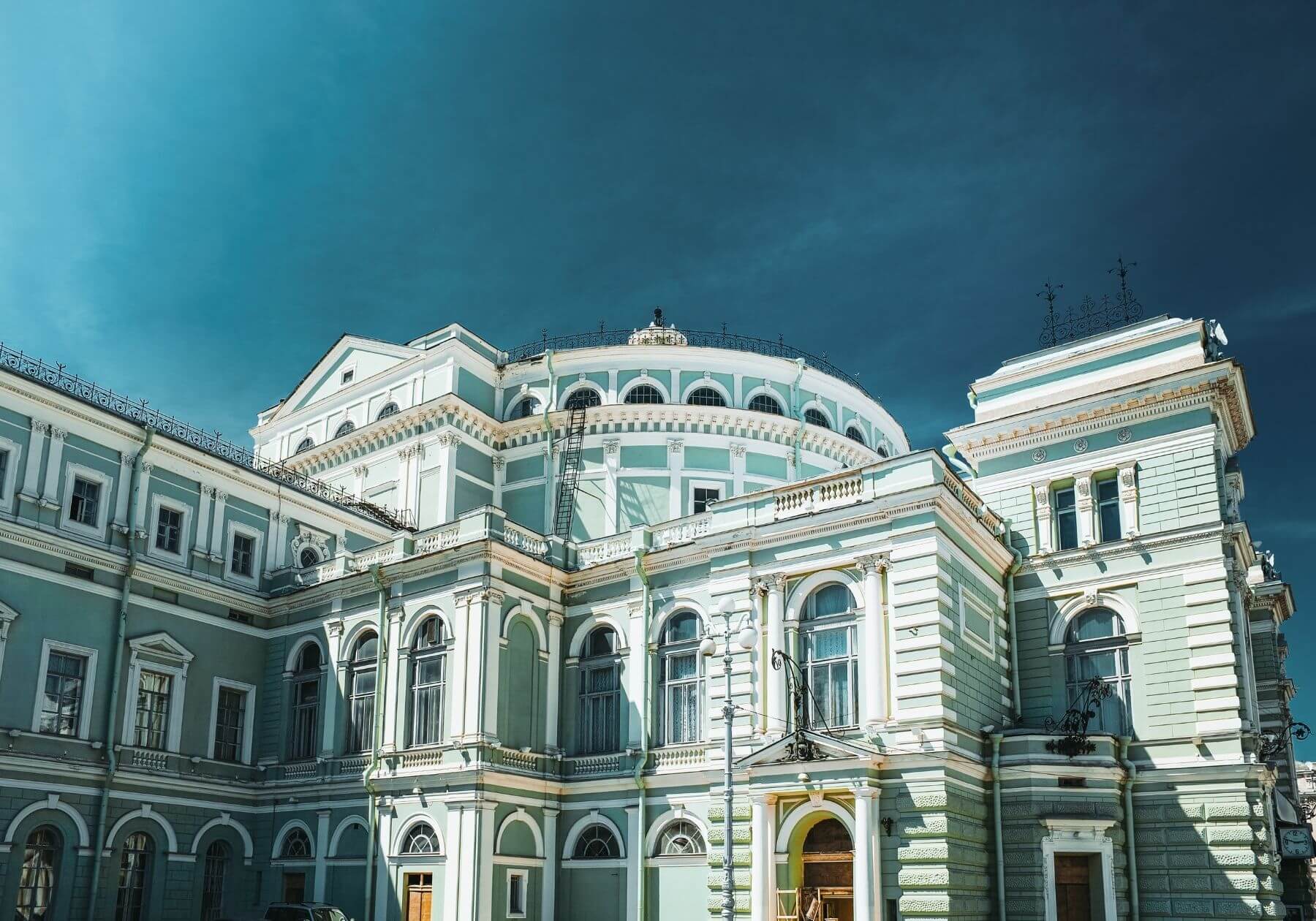
St. Petersburg Philharmonic
Where Shoshakovich’s Leningrad Symphony was performed in 1942
The so-called Leningrad Symphony was performed in this hall on August 9, 1942. In this theater, the concert season traditionally begins with a performance of the 7th Symphony.
The Leningrad Symphony became a myth with the Siege of St. Petersburg
Shostakovich’s name will be forever associated with the city of Leningrad (St. Petersburg’s name during the Soviet Union period). In 1942, when the city was suffering in the stranglehold of the German siege, the Leningrad composer was working on his 7th Symphony, which he wanted to give to his beleaguered countrymen. Against his will, on Stalin’s orders, he was taken out of the city through a final loophole, where he finished writing the symphony.
The work quickly became known abroad, and Stalin, recognizing its symbolic significance, had the score airlifted over the German positions into the city center, where the conductor Eliasberg was to perform the symphony during the siege. The symphony was set for a large orchestra, but at the first rehearsal only 15 exhausted and emaciated musicians appeared, surviving on sawdust, horse and rat meat. Eliasberg tried to rehearse the work, but the trumpeter could not elicit a sound from his instrument due to weakness, and some musicians could barely hold their instruments. After 15 minutes, Eliasberg had to end the rehearsal.
The performance day during the siege
Now an appeal was made to the front-line soldiers. So the orchestra could be filled up and Eliasberg had to rehearse the highly complex work ready for performance with the assembled orchestra in 6 days. Before the performance began, a Soviet general was said to have bombed the German troops to ensure a trouble-free performance. Loudspeakers had been set up throughout the city so that residents and enemies could sense the population’s will to resist.
Listeners and musicians risked their lives with the performance, fortunately it could be performed without any disturbances and the final applause knew no end.
The first movement of the symphony is the most programmatic: after a carefree introduction (the pre-war idyll), an invasion motif, growing over 15 minutes, breaks in accompanied by drums (as in Ravel’s Bolero), symbolizing the enemy and oppression. Shostakovich used parts of the melody “Da geh ich zu Maxim” from Franz Lehár’s operetta The Merry Widow, which was one of Hitler’s favorite works, for the invasion motif.
In fact, Shostakovich had written this movement in peacetime, so the always ambiguous composer was also communicating a hidden message here. He remains ambiguous even when the rescuer enters, for the musical theme of the rescuer is hardly different from the aggressor.
Stalin thanked Shostakovich badly for this act, because only 4 years after the war Shostakovich (with Prokofiev and Khatchaturian) had to endure a show trial.
Dmitri Shostakovich as an air-raid soldier at the Leningrad Conservatory in World War 2:

Concert of August 9, 1942:


http://www.philharmonia.spb.ru/en/
Hall of the Philharmonic:
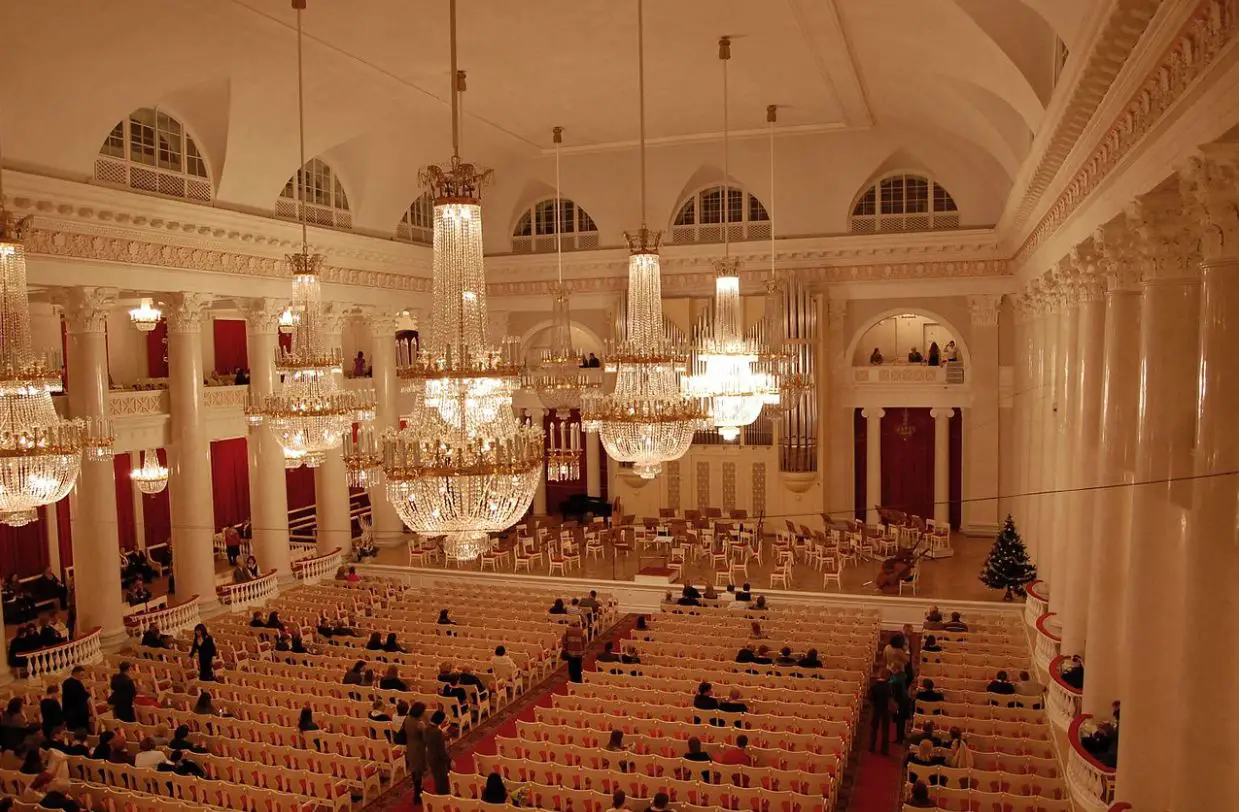
Bolshoi Theater Moscow
The Bolshoi Theater is famous for its ballet performances. Tchaikovsky’s “Swan Lake” was premiered here. The Bolshoi’s legendary ballet troupe of 200 dancers often tours abroad, and performances in Moscow are almost always sold out. Opera performances are also of the highest quality, often sung in Russian but increasingly in original languages.
The infamous visit of Stalin
This was also the site of Stalin’s infamous visit, accompanied by Molotov, as he listened to an opera by Shoshtakovich from behind a box curtain. A few days later, Pravda ran an article, probably written by Stalin, denouncing the work, thus Shoshtakovich was permanently in danger of being imprisoned. This fear accompanied him in the next years of his life and led him to depression and suicidal thoughts.
https://www.coopculture.it/heritage.cfm?id=6
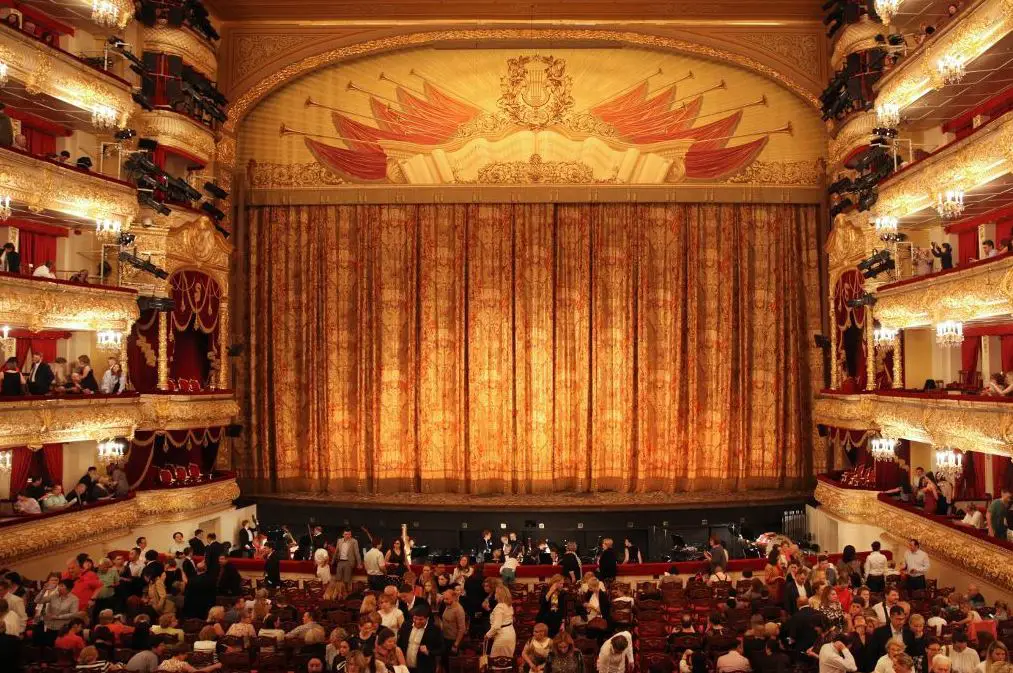
Grand Hall of the Moscow Conservatory
Where Horowitz Enchanted the World
This hall, dating from 1901, with its excellent acoustics, which is said to be based on ceramic hollow bodies inserted in the ceiling vault. It seats 1800 visitors and has an unusually large stage.
It was the place where Vladimir Horowitz played the moving concert on his return in 1986 after more than 50 years of exile. Everything had to be perfect, 50 sound engineers and technicians of Deutsche Grammophon traveled to capture this event of the century. It was clear that Horowitz wanted to play on his grand piano and this concert became the greatest pianistic pop event of the 20th century, with the peculiarity that the pop star was already 82 years old!
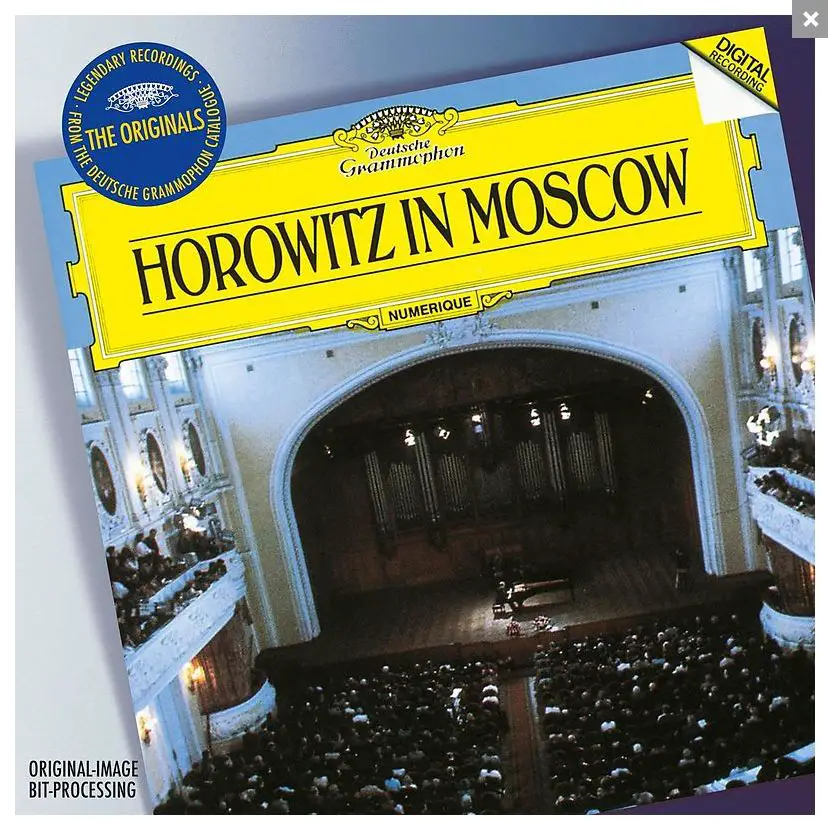
Natalya Sat-s Musical Theater
A unique children’s theater with a troubled past
In 1936, Natalya Sats asked Sergei Prokofiev to write a work that would introduce children to orchestral instruments and that would appeal to children’s musical tastes.
Natalya Sats ran a children’s theater as a state institution and approached Prokofiev, who had attended the theater with his sons. Prokofiev was enthusiastic about the idea of a work for children and set the libretto of “Peter and the Wolf” to music within a week with the first piano sketch. The first performance at the Moscow Conservatory was not successful, however, because Natalya became ill and the substitute narrator was inexperienced. A second performance with Natalya became a great success. When Prokofiev returned from his U.S. tour a year later, Sats was already in the Gulag because her husband, a minister, had fallen victim to a purge.
Sats sat in Siberia for 5 years, but was fully rehabilitated after Stalin’s death. She rebuilt the Children’s Theater created a new building in 1965, which still bears her name as an institution.
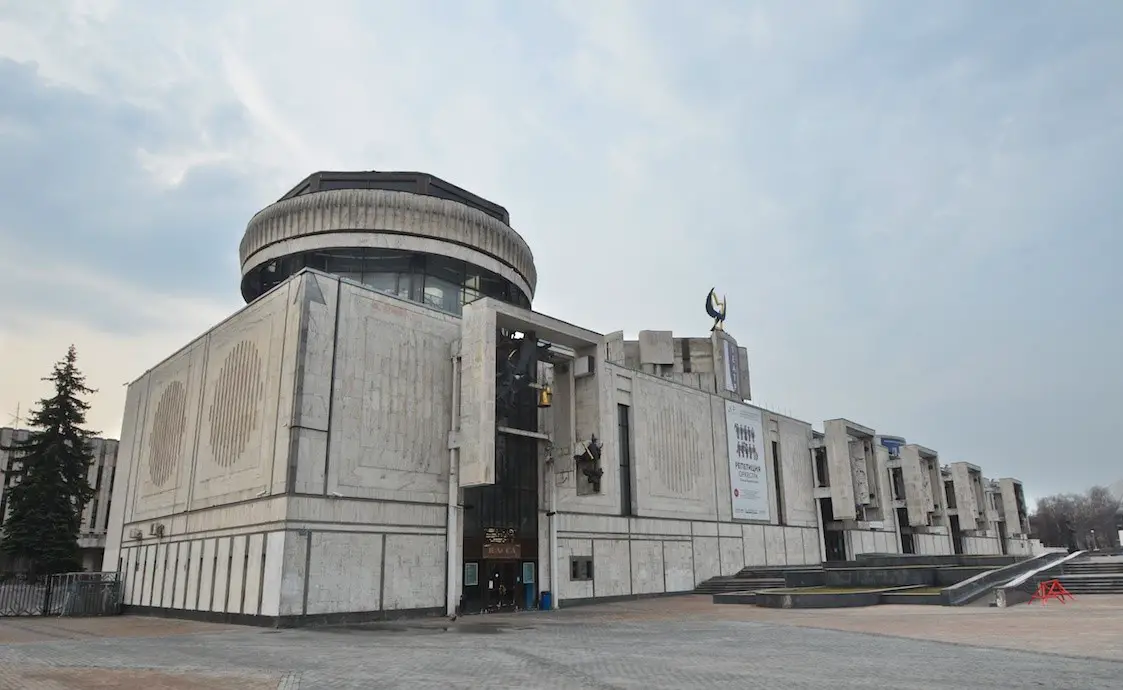
Glinka Chapel Choir
Glinka was for a time the leader of the Imperial Court Chapel, a choir at the solde of the Tsar and the oldest professional choir in Russia. In 1838, he traveled to Ukraine and recruited 20 singers for the choir. Rimsky-Korsakoff was one of his successors and still today this choir enjoys a high reputation. The Academic Chapel is one of the oldest concert halls in St. Petersburg and is famous for its acoustics.
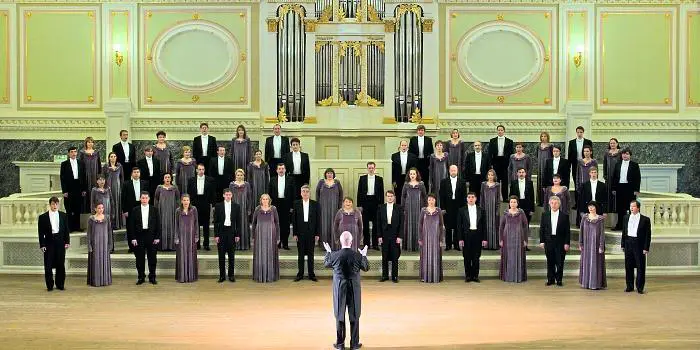
https://www.justgorussia.co.uk/en/academic_glinka_capella.html
MUSEUMS
Mussorgsky Museum Naumovo
The Pskov Museum Authority manages the Naumovo estate in Mussorgsky’s homeland as the composer’s only museum. The village of Naumovo is the heart of this museum complex, which also includes the estate’s main house, servants’ quarters, barn, greenhouse, dairy, and blacksmith shop. In the southern part of the estate, some centuries-old trees are preserved.
Chirikov estate:
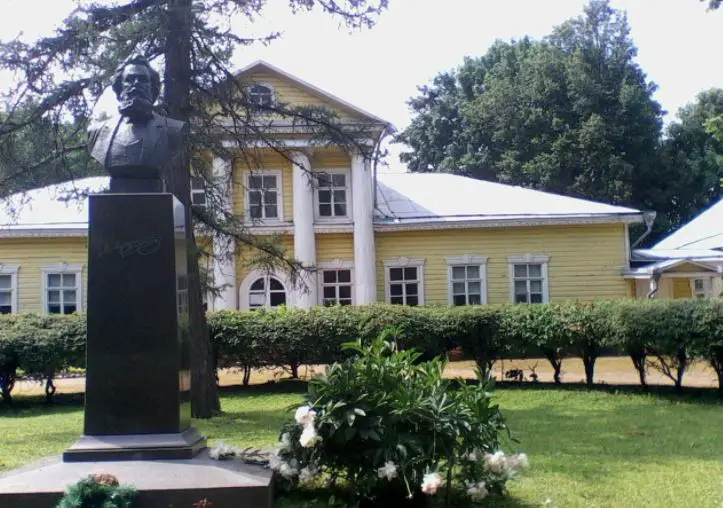
Prokofiev Museum Moscow
The museum is located in Prokofiev’s last apartment in Kamergersky Lane. One can see there everyday objects as well as stage sets, books and sheet music. The apartment consists of a living room, the study and two other rooms.
In addition, on the first floor there is also a small concert hall with its grand piano.
The visitor information is in Russian.
View into the museum:
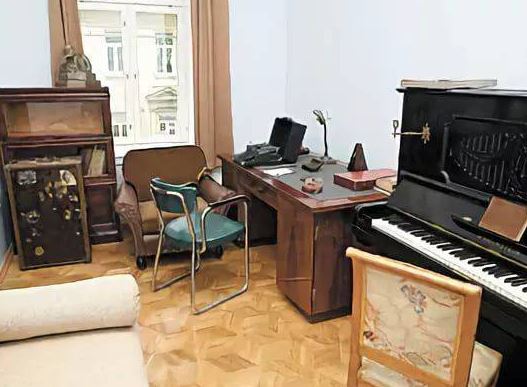
Rimsky-Korsakoff Museum Moscow
Rimsky-Korsakoff’s apartment was a meeting place of many famous composers. Today, his residence at 28 Zagorodny Prospekt, where he spent his last 15 years, houses a small museum in a grand piano, which displays the premises of the house and memorabilia of the composer, as well as his work.
View of the Rimsky-Korsakoff Museum:
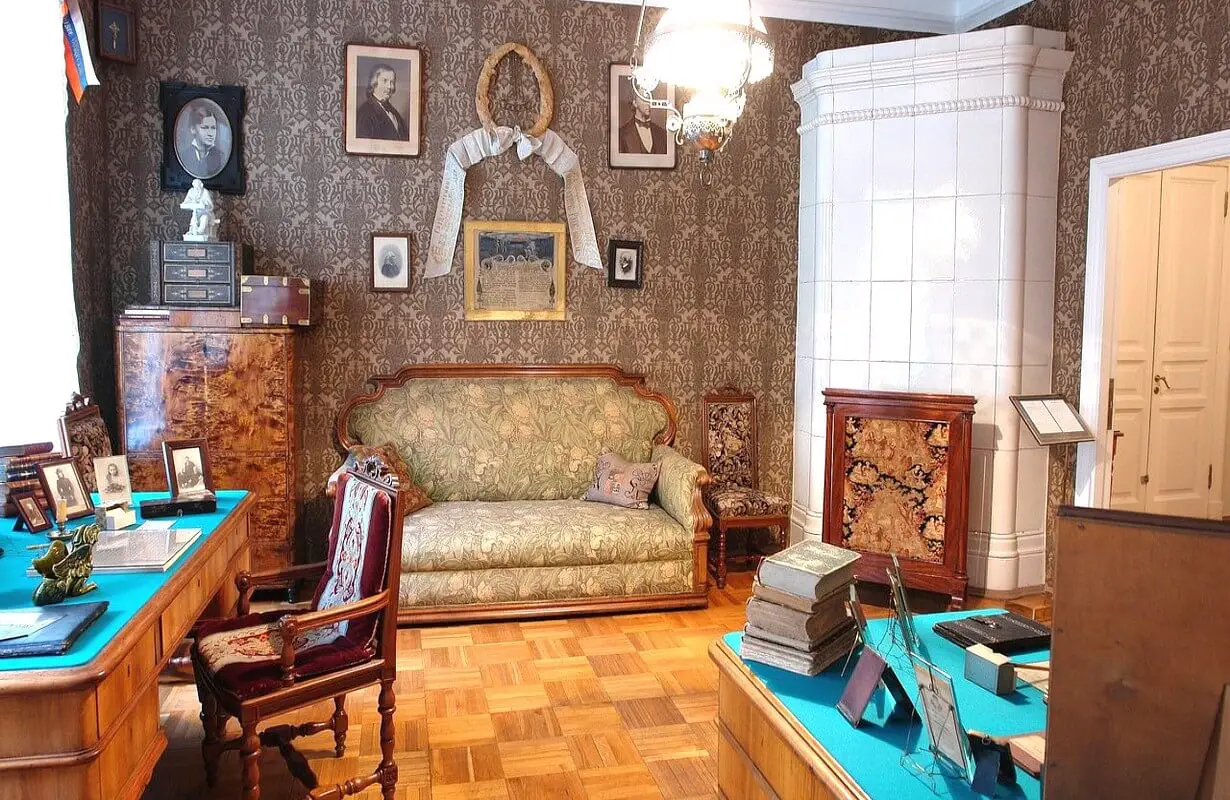
Rachmaninov Museum Ivanova
Rachmaninov also acted as an estate manager on Ivanova and lent a hand. After the Rachmanonovs left the estate in the wake of the Russian Revolution, it was plundered and fell into disrepair. In the seventies the famous owner was remembered again and the estate was restored. Today it functions as a museum and Rachmaninov’s living situation has been recreated and the stages of his life documented in a permanent exhibition.
Rachmaninov on the estate:
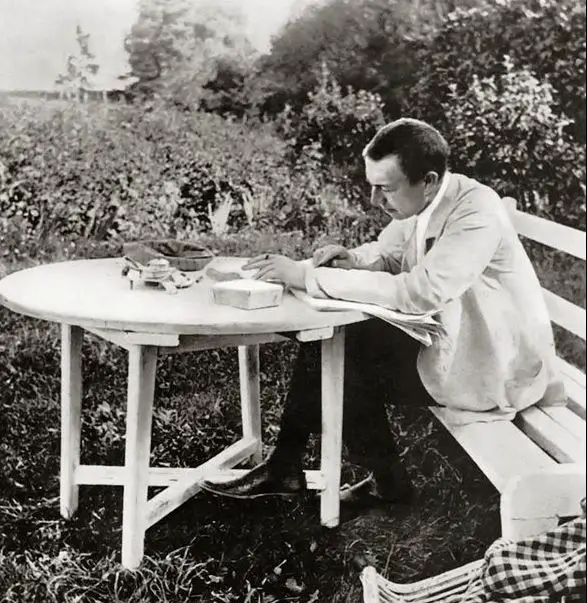
View inside:
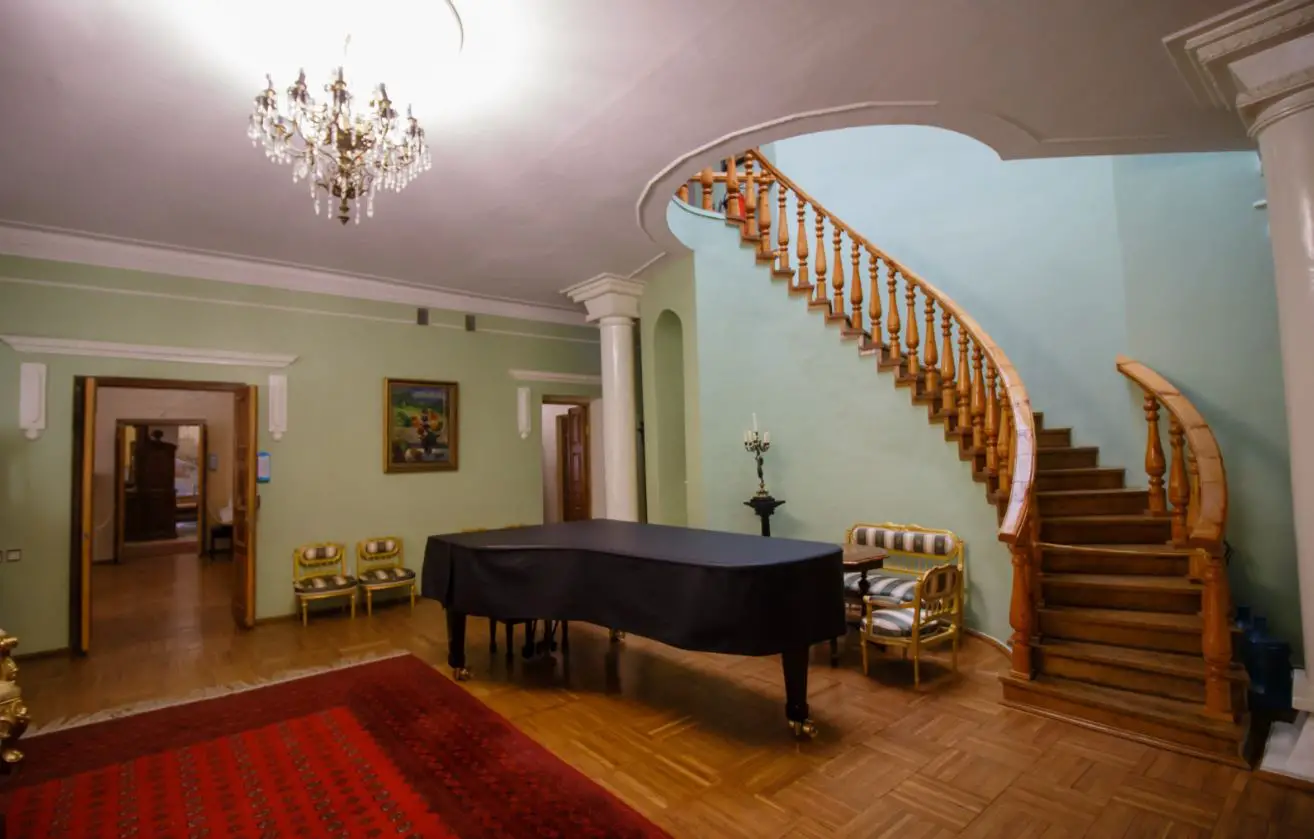
Consult website for hours of operation, museum is open primarily in summer months
Skrjabin Museum Moscow
Scriabin was a virtuoso pianist and the piano was the instrument for which he composed the most. He was a native of Moscow and the museum is set in his last Moscow apartment.
Scriabin was synesthetic (musical sounds were linked to specific color perceptions for him) and he developed a theory of color and music.
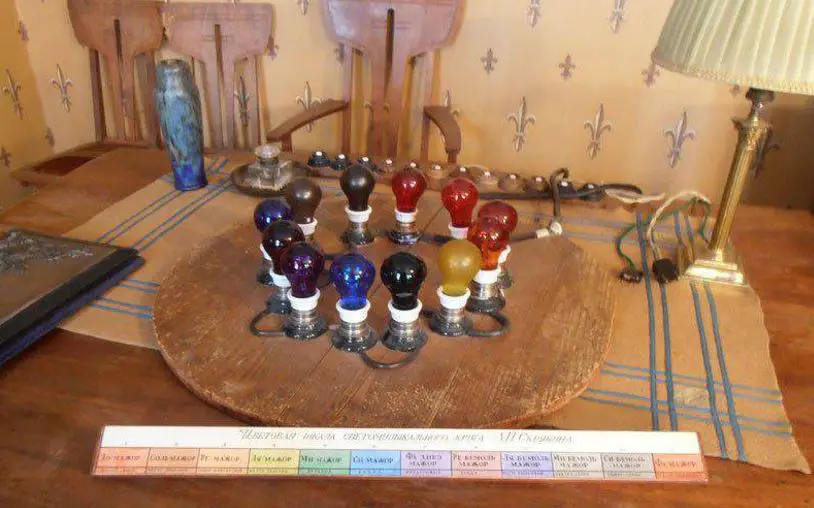
Two works, among others, became famous by making this link obvious. One is “Poême du feu”, a piano concerto in which he made musical passages visible with colors, using a so-called color piano. The second piece is “Prometheus”, for which a professor created a device with which colors could be “sounded”. The museum shows with machines and equipment this interesting facet.

The museum has six rooms: an entrance hall, an office, a living room, a dining room, a children’s room and a bedroom.
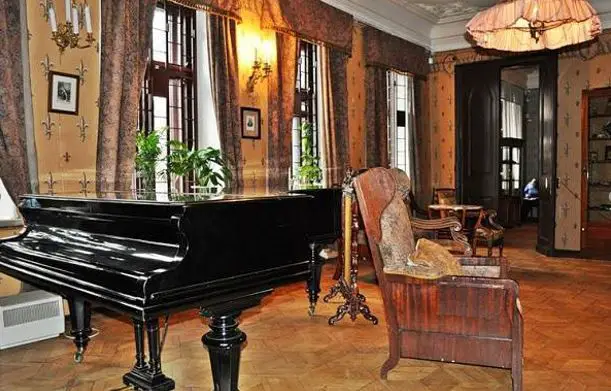
Tchaikovsky Museum Votkinsk
The museum was built on the estate where Tchaikovsky spent his first 8 years.
The museum rivaled the larger Tchaikovsky Museum in Klein near Moscow for exhibits. The main exhibits are a piano on which Tchaikovsky began composing as a teenager, as well as furniture and toys.
The view of the lake is very beautiful, the idyll disturbed in the 20th century when Votinsk served as a production site for Soviet nuclear-tipped intercontinental ballistic missiles, and so did not even appear on maps, let alone in guidebooks.
That has changed since Russian independence. In recent years, over 100,000 people visited the property.
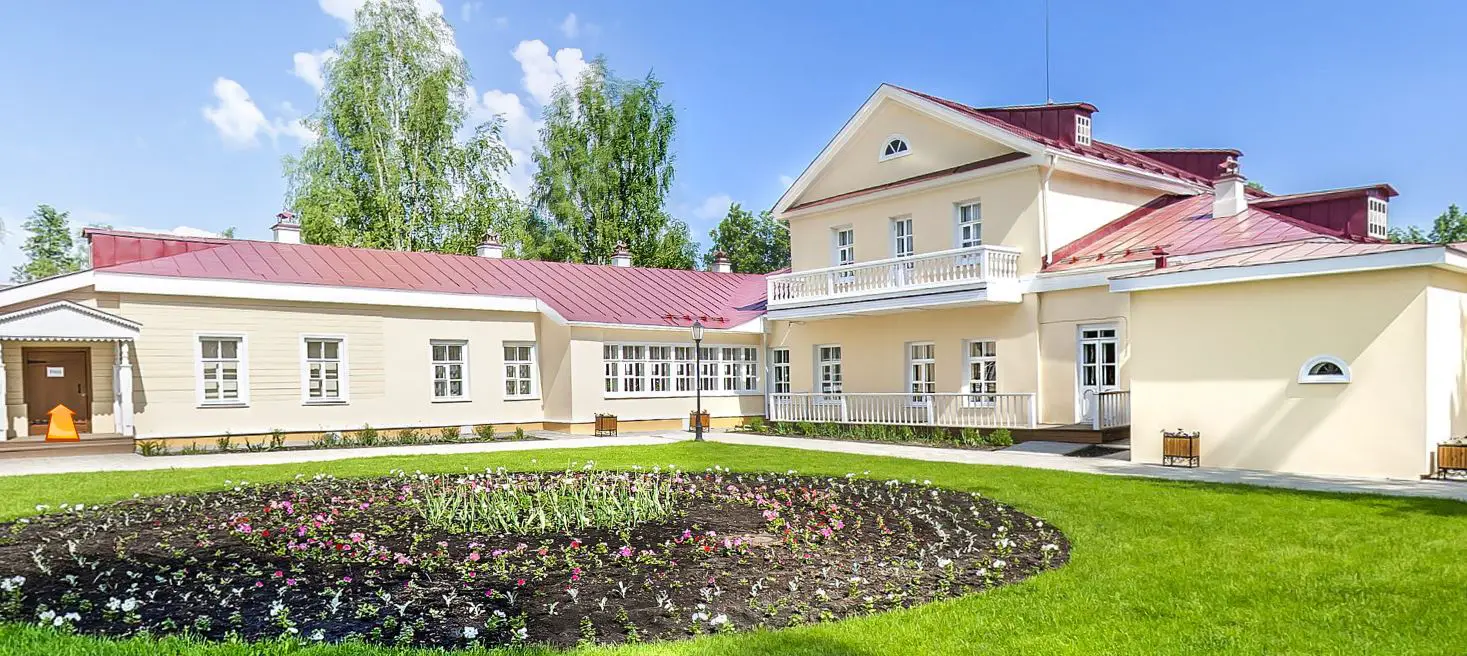
Tchaikovsky Museum Klin
The estate in this city where 80,000 people live today is located 90 kilometers outside Moscow. It was already transferred to the museum after Tchaikovsky’s death. His servant Sofronov and his brother Modest furnished it with personal belongings of the musician. After Modest’s death, the museum had a troubled past: “As a result of the Second World War, most of the museum inventory was evacuated to Votkinsk, Udmurtia. From the end of November until December 15, 1941, Klin was in the occupation zone of the German Wehrmacht, which severely damaged the museum. The first floor served as a motorcycle garage and cobbler’s workshop. The upper floor became quarters for 100 soldiers, who used wooden furniture left in the house as firewood.
After the recapture of Klin by Soviet soldiers, the British Secretary of State Anthony Eden and the Soviet Ambassador of Great Britain Ivan Maiski inspected the damaged museum as early as December 19, 1941, as part of a diplomatic mission with more than 20 correspondents. After the renovation of the house, Tchaikovsky’s removed items were returned to the museum in November 1944, which reopened with a ceremony on May 6, 1945.” (Source: Wikipedia). The house has become a central place of Tchaikovsky’s memory and all famous musicians such as Gilels, Horowitz, Richter, etc. visited the place and played in the music hall located on the premises, where occasional concerts are held.
Tchaikovsky House:
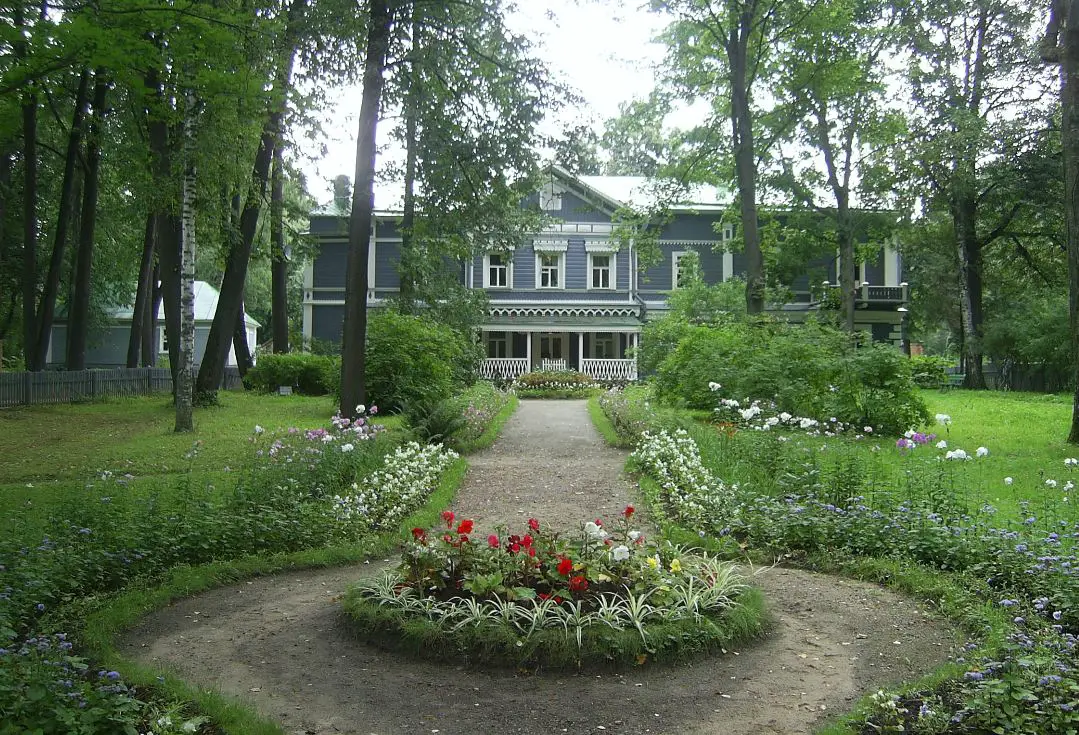
HOUSES AND APARTMENT OF ARTISTS
Today a hotel.
Many books have been written about the mystery of Tchaikovsky’s cause of death. Was it the glass of water with which he had involuntarily contracted cholera, which was rampant in St. Petersburg, or was it a court of honor whose verdict he had bowed to and swallowed arsenic? Nowadays the opinion prevails that the former is true. Anyway, the building where he died still exists, his death room can even be booked (Tchaikovsky Suite), it is a hotel called Tchaikovskyhouse. It was the apartment of his brother Modest at that time. In the photo below you can see the death room framed in blue.
Tchaikovskyhouse:
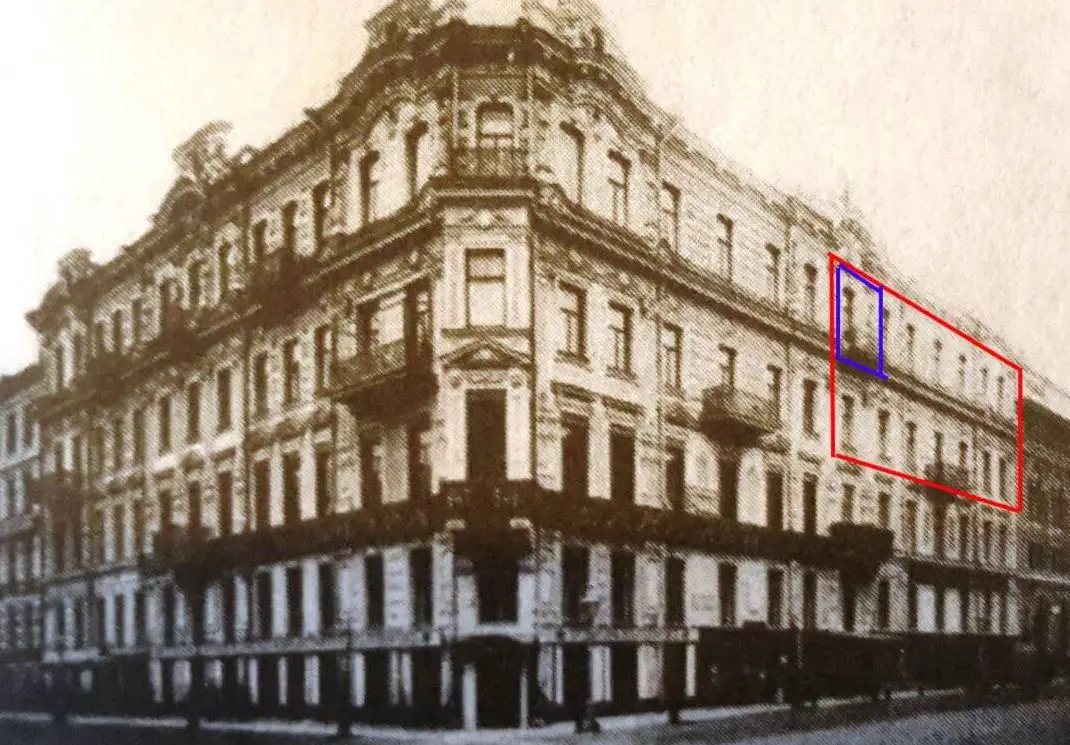
MONUMENTS
Glinka Statue St. Petersburg
The statue was erected in 1904. It first stood in another place, then had to be changed location because it interfered with the increasing motorized traffic. It is an imposing bronze monument, the base of which is made of red granite.
Glinka Monument:
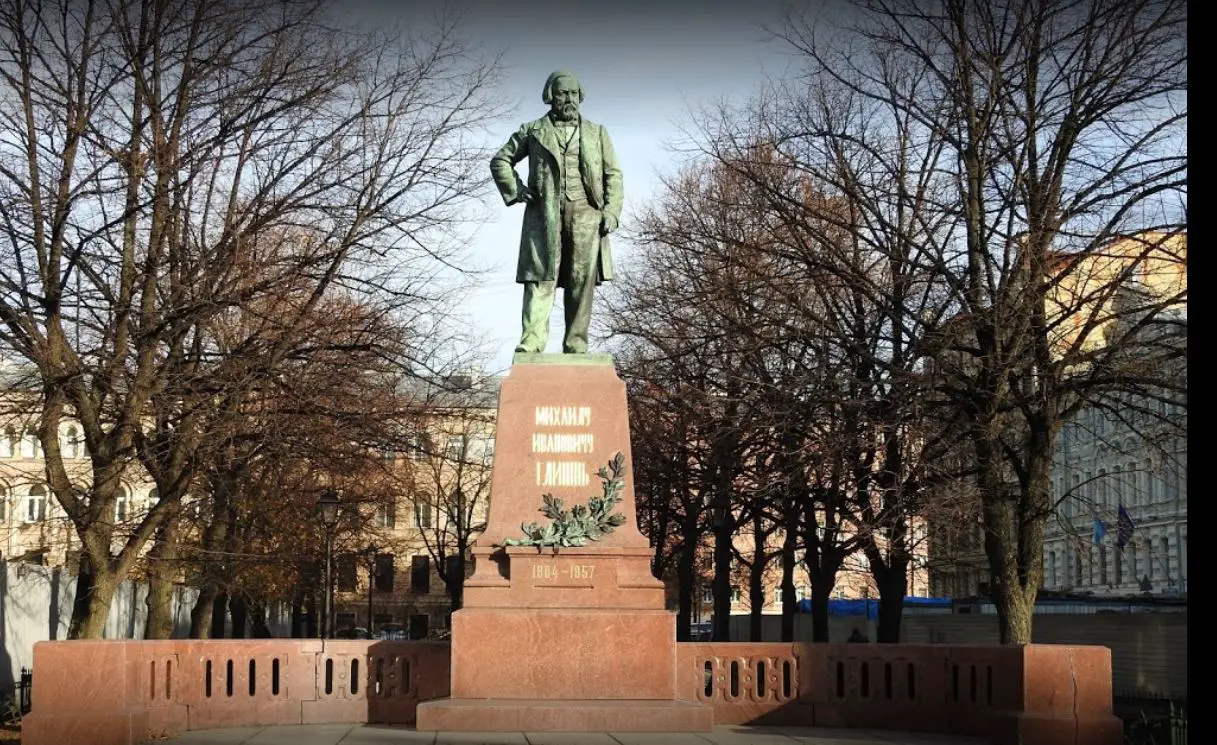
Rimsky-Korsakov Monument St. Petersburg
Opposite the Mariinsky Theater stands an imposing bronze statue of the conductor dating from 1950.
Rimsky-Korsakov statue:
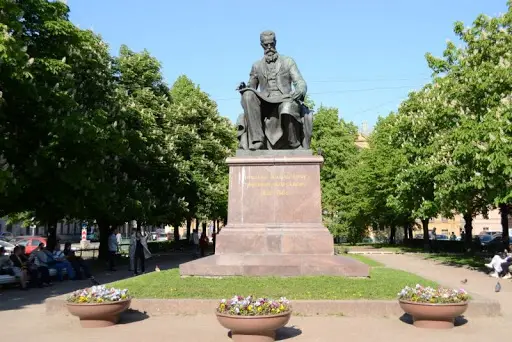
Prokofiev statue Moscow
On the 125th anniversary of his birth, a statue of the composer was unveiled at his residence, which is located in the traditional and car-free Kamergersky Lane.
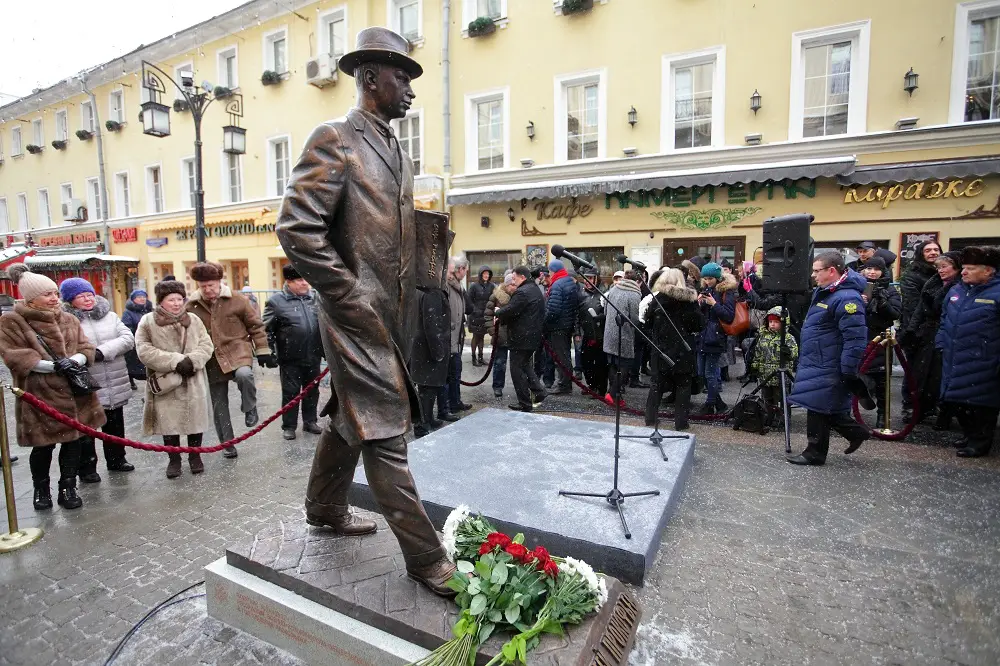
RESTAURANT
Where Tchaikovsky drank the ominous glass of water
5 days before his death, Tchaikovsky drank the ominous glass of water in Leiner’s restaurant, although he was informed by the waiter that boiled water was not available, which was necessary because of the rampant cholera. He then went to his brother Modest’s apartment and was not to leave it, dying on November 6. The restaurant building still stands, Leiner’s no longer exists, this beautiful building is now home to an American fast food restaurant.
18 Nevsky Prospect:
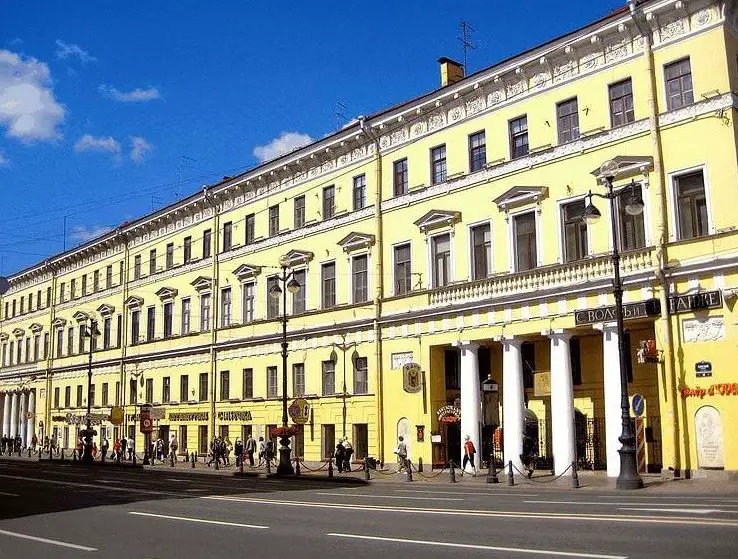
CEMETERIES AND TOMBS OF FAMOUS MUSICIANS
Mikhail Glinka
Tikhvin Cemetery St. Petersburg
Glinka was a frequent traveler in the last decade of his life and died unexpectedly of a cold in Berlin after a stay of several months. His body was subsequently repatriated and his tomb is located in the Alexander Nevsky Monastery cemetery.
Tikhvin Cemetery:
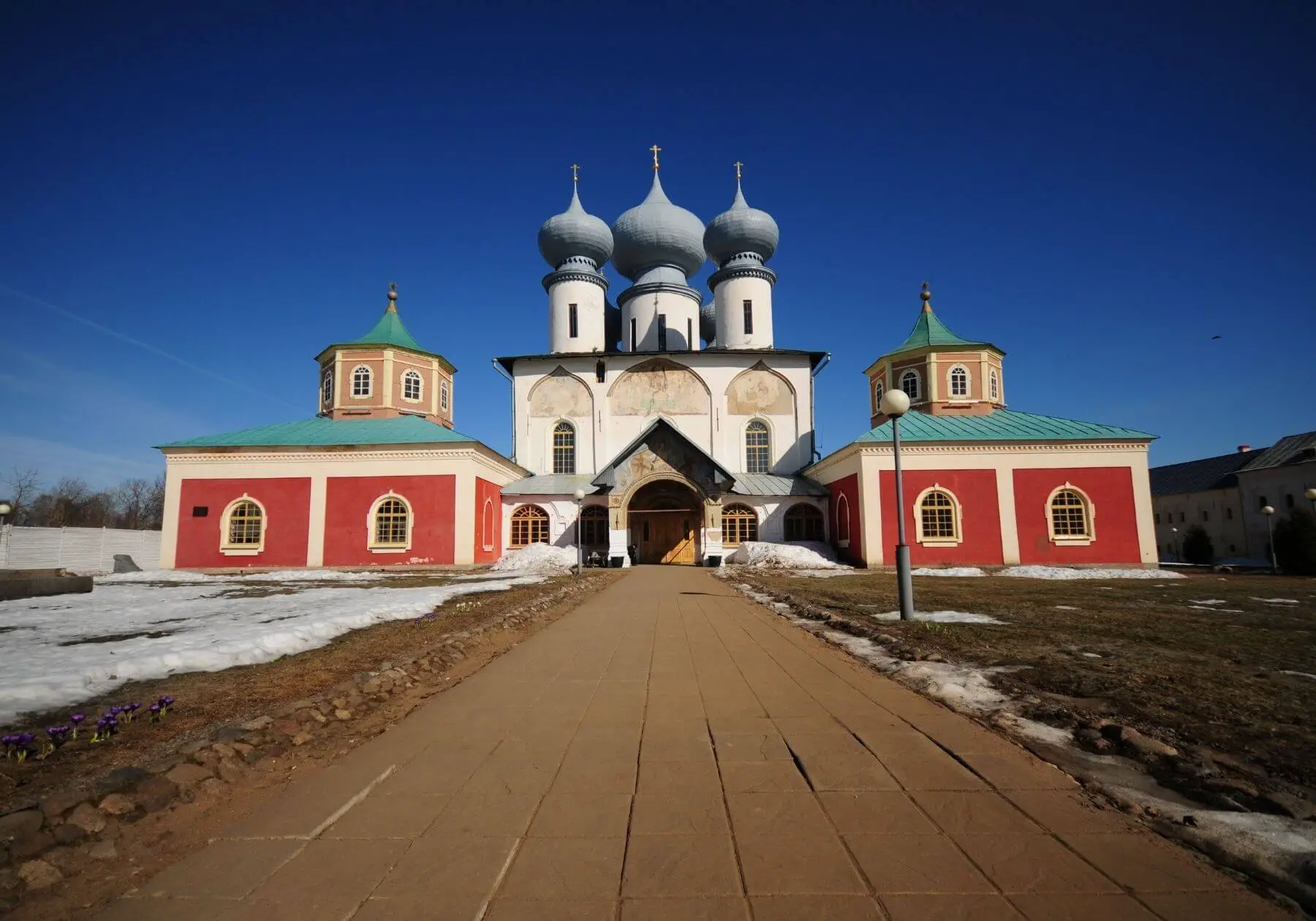
Glinka’s gravesite:
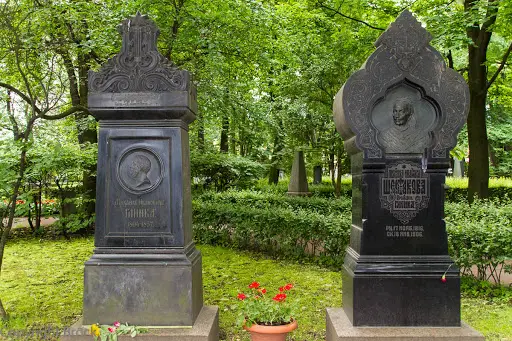
Modest Mussorgsky
Tikhvin Cemetery St. Petersburg
Mussorgsky literally drank himself to death. He died in a St. Petersburg hospital at the age of 42. His body is buried in the spectacular Tikhvin Cemetery of the Alexander Nevsky Monastery in St. Petersburg.
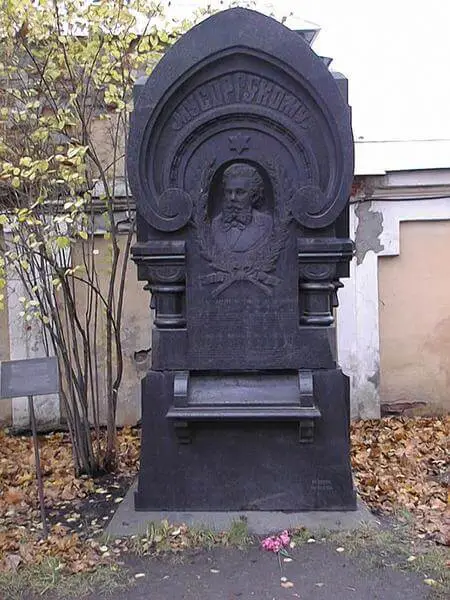
Peter Tchaikovsky
Tikhvin Cemetery St. Petersburg
His grave is located in the Tikhvin Cemetery at the Alexander Nevsky Monastery in Saint Petersburg. Tchaikovsky’s abdication took place in Kazan Cathedral, and the attendance was huge, with 60,000 people requesting tickets. The grave is located in the Tikhvin cemetery in the Alexander Nevsky Monastery. Alexander Borodin, Mikhail Glinka, Rimsky-Korsakov and Modest Mussorgsky are also buried near it.
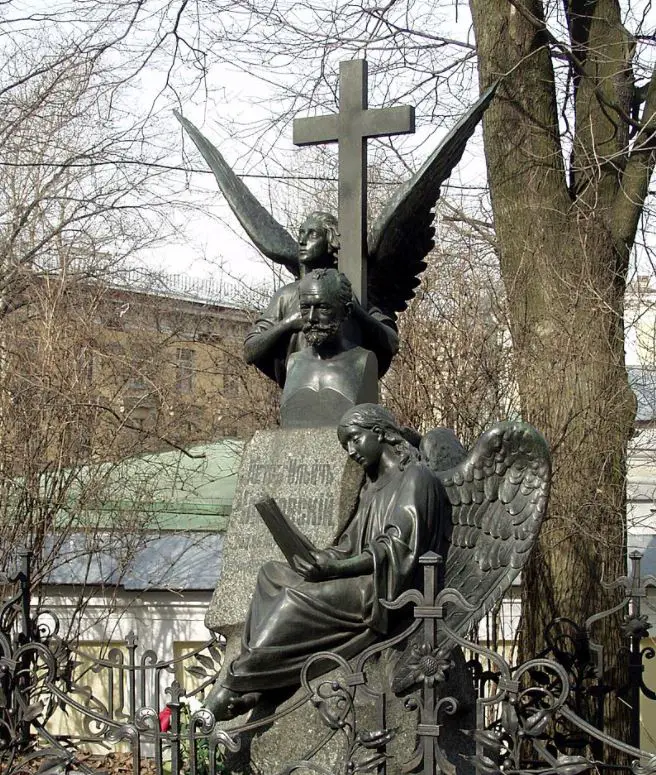
Rimski-Korsakoff
Tikhvin Cemetery St. Petersburg
Rimsky-Korsakoff died of angina in 1908 and was given an honorary grave in the Alexander Nevsky Cemetery.
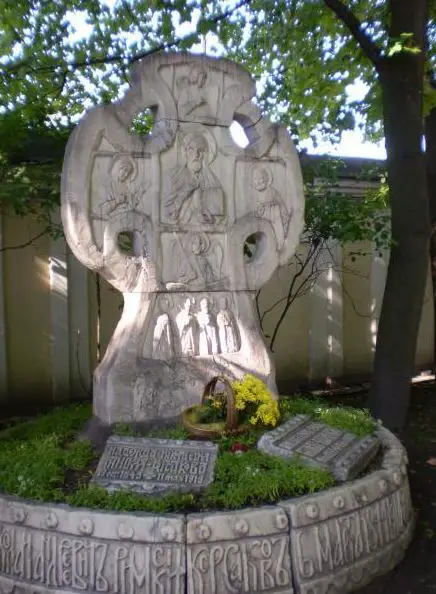
Sergei Prokofiev
Novodevichy Cemetery Moscow
Prokofiev is buried here with his second wife (section 3, row 47). His first wife (a singer) was able to leave the labor camp after the political thaw after nine years and the country after another 15 years, where she was able to make a living from the royalties of Prokofiev’s music outside the Eastern Bloc. She even made a recording of “Peter and the Wolf” as a narrator.
Also buried in this cemetery are Nicolas Gogol, Sergei Eisenstein (for whose famous films Alexander Nevsky and Ivan the Terrible Prokofiev wrote music), Nikita Khrushchev and Boris Yeltsin, among others.
Prokofiev’s grave:
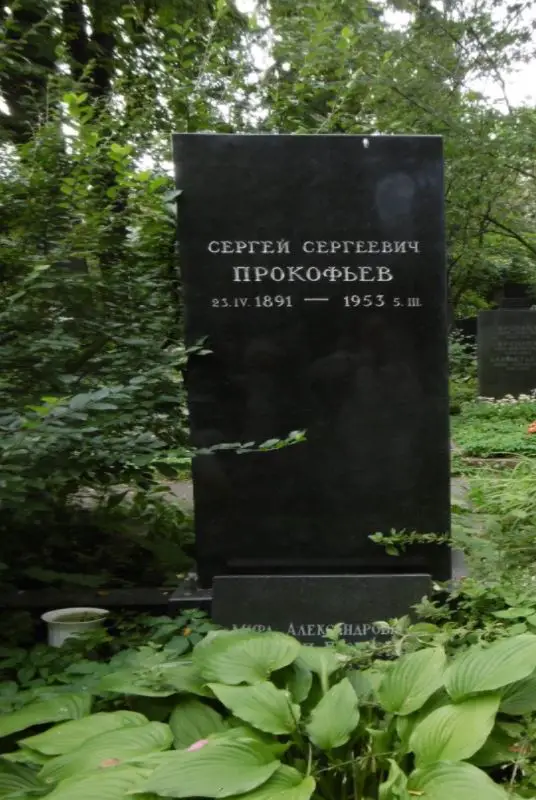
Dmitri Shostakovitch
Novodevichy Moscow Cemetery
Shostakovich was not buried in his native St. Petersburg, but in the Russian National Cemetery Novodevichy (Section 2, No 39). He had spent the last years of his life in Moscow.
On his grave there is the note motif D, Es, C, B. It symbolizes his German initials (D.Sch), which he had used several times in his compositions.
The grave of Shostakovitch:
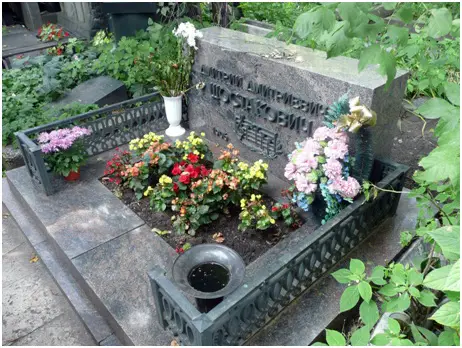

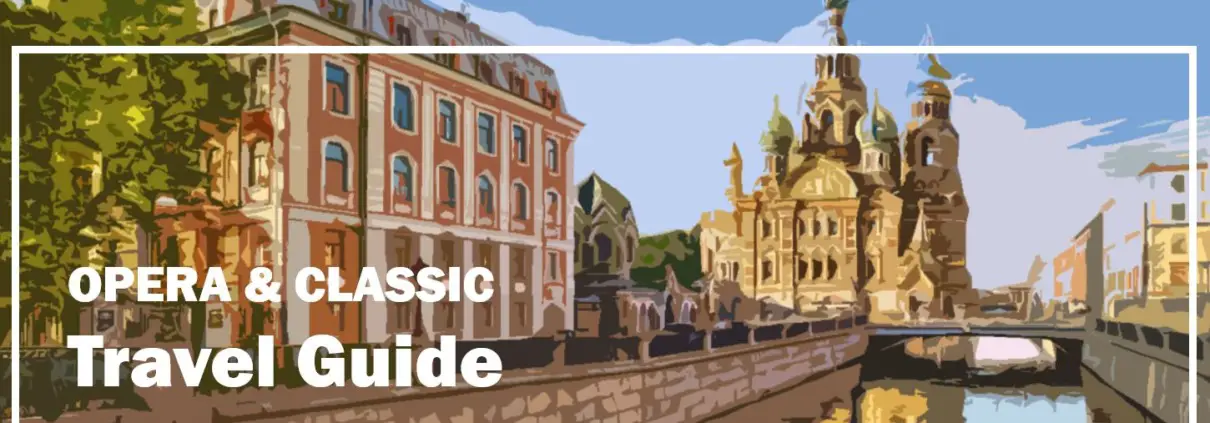


The Russian Cultural Heritage is enormous. So rich, so impressed.
Russia is a unique gem of the World.